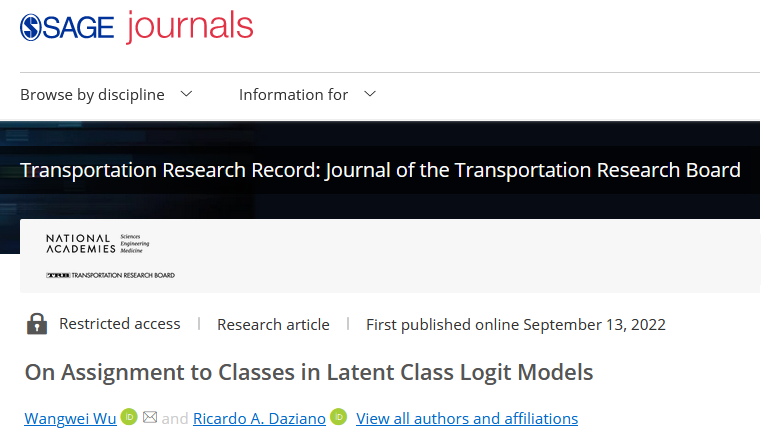Wangwei Wuhttps and Ricardo A. Daziano
Abstract
Random parameter logit models address unobserved preference heterogeneity in discrete choice analysis. The latent class logit model assumes a discrete heterogeneity distribution, by combining a conditional logit model of economic choices with a multinomial logit (MNL) for stochastic assignment to classes. Whereas point estimation of latent class logit models is widely applied in practice, stochastic assignment of individuals to classes needs further analysis. In this paper we analyze the statistical behavior of six competing class assignment strategies, namely: maximum prior MNL probabilities, class drawn from prior MNL probabilities, maximum posterior assignment, drawn posterior assignment, conditional individual-specific estimates, and conditional individual estimates combined with the Krinsky–Robb method to account for uncertainty. Using both a Monte Carlo study and two empirical case studies, we show that assigning individuals to classes based on maximum MNL probabilities behaves better than randomly drawn classes in market share predictions. However, randomly drawn classes have higher accuracy in predicted class shares. Finally, class assignment based on individual-level conditional estimates that account for the sampling distribution of the assignment parameters shows superior behavior for a larger number of choice occasions per individual.
